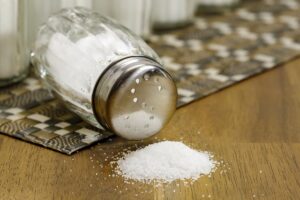One-Third of Chocolate Products Exceed Heavy Metal Limits in United States
- “Miracle Weight-Loss Drug” Sweeps Across America
- The United States Avian Influenza Outbreak Worse Than Expected?
- Global First: Bovine Avian Influenza Transmission to Humans Detected
- Potassium-Enriched Salt Substitutes: Reducing Blood Pressure Risk?
- Tritium Detection in Fukushima’s Seawater: Below Safety Standards
- What Reason Let AstraZeneca Withdraws COVID Vaccine From The Market?
One-Third of Chocolate Products Exceed Heavy Metal Limits in United States
- AstraZeneca Admits for the First Time that its COVID Vaccine Has Blood Clot Side Effects
- Was COVID virus leaked from the Chinese WIV lab?
- HIV Cure Research: New Study Links Viral DNA Levels to Spontaneous Control
- FDA has mandated a top-level black box warning for all marketed CAR-T therapies
- Can people with high blood pressure eat peanuts?
- What is the difference between dopamine and dobutamine?
- How long can the patient live after heart stent surgery?
“Consumer Reports” : One-Third of Chocolate Products Exceed Heavy Metal Limits in United States
On Oct 25, “Consumer Reports” stated hat one-third of various chocolate products tested recently had “concerning” levels of lead and cadmium and called on Hershey to reduce the heavy metal content in its chocolate.
“Consumer Reports” is a magazine hosted by the Consumer Union of the United States that influences American consumer culture. As an independent nonprofit organization, the Consumer Union of the United States aims to provide consumers with impartial information covering products, services, personal finance, health, and nutrition.

It is reported that “Consumer Reports” tested seven products: dark chocolate bars, milk chocolate bars, cocoa powder, chocolate chips, almond chocolate cookies, chocolate cakes, and hot chocolate.
Products found to exceed the heavy metal limits include Walmart’s dark chocolate bars and mixed hot chocolate, Hershey and Droste’s cocoa powder, Target’s semi-sweet chocolate chips, and Trader Joe’s, Nestlé, and Starbucks’ mixed hot chocolate.
Only the milk chocolate bars, which contain less cocoa solids, did not exceed the heavy metal limits. “Consumer Reports” warned that prolonged exposure to these heavy metals could lead to neurological problems, immune system suppression, and kidney damage. The risk is even greater for pregnant women and children because heavy metals can cause developmental problems and even lower intelligence.
The Food and Drug Administration (FDA) informed the Consumer Union of the United States that experts consider chocolate to be a potential source of lead and cadmium exposure, but manufacturers and processors still have a responsibility to ensure the safety of their food.
In a report released last year, “Consumer Reports” found that 23 out of 28 tested dark chocolate bars contained excessive lead or cadmium. Both lead and cadmium were detected in all these products, including chocolate from popular brands like Hershey, Theo, and Trader Joe’s.
Brian Ronholm, the magazine’s food policy director, said that Hershey, as a “leading and popular brand,” should be committed to making its chocolate safer. However, similar demands were not made of other manufacturers.
In March of this year, Hershey’s Chief Financial Officer Steve Voskuil stated that the company is seeking to reduce the levels of lead and cadmium, referring to these two metals as natural soil elements present in chocolate products, but they are eager to completely eliminate them.
“Consumer Reports” stated that more than 75,000 consumers previously signed a petition demanding that Hershey reduce heavy metal content in its chocolate, and they are now petitioning the company again.
Christopher Gindlesperger, a spokesperson for the National Confectioners Association, said that chocolate and cocoa can still be safely consumed, just as they have been for centuries.
One-Third of Chocolate Products Exceed Heavy Metal Limits in United States
(source:internet, reference only)
Disclaimer of medicaltrend.org
Important Note: The information provided is for informational purposes only and should not be considered as medical advice.



